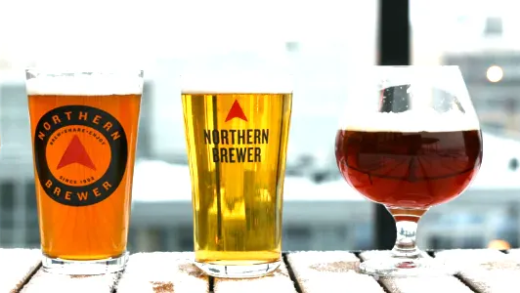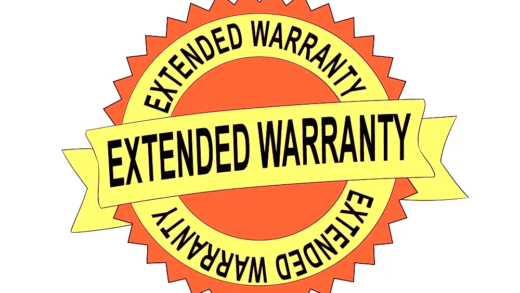Hypermiling involves techniques for maximizing fuel efficiency but can present safety risks. Dangerous methods like drafting and coasting in neutral pose significant dangers. Safer alternatives include maintaining proper tire pressure, smooth driving, and carpooling. Experts emphasize balancing fuel efficiency with safety, and real-life examples highlight both successes and cautionary tales.
Hypermiling Basics: What You Need to Know
Hypermiling refers to a set of driving techniques aimed at maximizing fuel efficiency. The primary goal is to stretch the distance a vehicle can travel on a single gallon of fuel. This practice has gained popularity among eco-conscious drivers and those looking to save money on gas. By implementing various strategies, such as maintaining a steady speed, reducing weight in the vehicle, and minimizing idling, drivers can significantly increase their fuel economy.
Understanding the principles behind hypermiling is crucial. For instance, driving at lower speeds can reduce air resistance, which in turn lowers fuel consumption. Additionally, using cruise control on highways can help maintain a steady pace, further optimizing fuel use. However, hypermiling is not just about driving habits; it also involves vehicle maintenance. Regularly checking tire pressure and ensuring the engine is in good condition can contribute to better fuel efficiency.
Overall, hypermiling techniques can lead to substantial savings at the pump, making it an attractive option for many drivers.
Dangerous Techniques: Common Methods to Avoid
While many hypermiling techniques are safe and effective, some methods can be quite risky. Certain dangerous hypermiling methods include drafting behind larger vehicles, excessive coasting, and aggressive speed manipulation. Drafting involves driving closely behind a larger vehicle to reduce wind resistance. Although it can save fuel, it poses significant safety risks, as it reduces reaction time and can lead to accidents.
Another risky technique is coasting in neutral. This practice can be tempting for those looking to save fuel, but it reduces vehicle control, especially on downhill slopes. Additionally, shifting in and out of neutral can wear down transmission components over time.
Drivers should also avoid extreme speed reduction, as driving too slowly can disrupt traffic flow and increase the risk of rear-end collisions. Instead of focusing on these dangerous methods, it’s essential to stick to safer, more practical techniques that still promote fuel savings without jeopardizing safety.
Safety Risks: How These Techniques Endanger Lives
The risks associated with dangerous hypermiling methods cannot be overstated. Implementing unsafe practices not only endangers the hypermiler but also other road users. For instance, the act of drafting can create a false sense of security, leading to risky maneuvers that may result in accidents. Furthermore, driving in neutral compromises the driver’s ability to accelerate quickly in emergencies, potentially leading to fatal consequences.
Another significant safety concern is the impact of extreme speed changes on traffic dynamics. Sudden deceleration can cause confusion among drivers, leading to collisions. High-profile accidents have occurred due to hypermilers engaging in risky behaviors without considering the broader implications of their actions.
To mitigate these dangers, it’s crucial to understand the balance between fuel efficiency and safety. By adhering to safe driving practices while still implementing effective fuel-saving strategies, drivers can protect themselves and others on the road.
Consequences of Risky Techniques: What Could Go Wrong
Using risky hypermiling techniques can lead to serious consequences. Drivers who engage in unsafe practices often find themselves in precarious situations. For example, drafting behind larger vehicles might save fuel, but it can also result in catastrophic accidents if the lead vehicle suddenly brakes. This method creates a dangerously close proximity, reducing the time available for reaction.
Coasting in neutral, while it seems like a smart way to conserve fuel, can drastically impair vehicle control. If a driver needs to accelerate suddenly, the delay in shifting back into gear can lead to collisions. Moreover, this practice can strain the transmission, potentially leading to costly repairs.
Extreme speed reductions can confuse other drivers, increasing the risk of rear-end collisions. In some cases, hypermilers have reported being honked at or tailgated because their slow speeds disrupt the flow of traffic. Thus, the consequences of using risky hypermiling methods can not only affect the hypermiler but also endanger everyone on the road.
Safer Alternatives: Fuel-Saving Without the Risk
Fortunately, there are several fuel-saving techniques that do not compromise safety. Here are some effective alternatives to hypermiling:
- Maintain Proper Tire Pressure: Keeping tires inflated to the recommended pressure can improve fuel efficiency by up to 3%. Regular checks are essential.
- Regular Vehicle Maintenance: A well-maintained engine performs better and uses less fuel. Regular oil changes and air filter replacements can make a significant difference.
- Adopt Smooth Driving Techniques: Instead of aggressive acceleration and braking, smooth transitions help maintain momentum and conserve fuel.
- Use Air Conditioning Wisely: While it can be tempting to blast the AC, using it judiciously—especially at highway speeds—can save fuel.
- Carpooling: Reducing the number of vehicles on the road not only saves fuel but also decreases traffic congestion.
These strategies promote fuel savings while ensuring safety on the road.
Expert Opinions: What Do Professionals Say?
Experts have mixed opinions about the effectiveness of hypermiling. Some automotive professionals advocate for certain techniques, arguing that they can lead to significant fuel savings without compromising safety. They emphasize that practices like maintaining a steady speed and reducing unnecessary weight are beneficial.
However, many experts warn against dangerous hypermiling methods. They point out that while the allure of saving money on fuel is strong, the potential risks often outweigh the benefits. According to a recent study by the National Highway Traffic Safety Administration, risky behaviors associated with hypermiling lead to increased accident rates.
In conclusion, while hypermiling can offer fuel-saving benefits, it is crucial to remain mindful of safety. By focusing on safer alternatives and heeding expert advice, drivers can effectively balance fuel efficiency and safety on the road.
Finding the Balance: Fuel Efficiency and Safety
Hypermiling often presents a dilemma between achieving better fuel economy and ensuring road safety. Striking a balance is essential for responsible driving. To maintain fuel efficiency without compromising safety, consider these strategies:
- Drive at Optimal Speeds: Keeping speeds between 45-65 mph is generally more fuel-efficient while still allowing for safe travel.
- Utilize Fuel-Efficient Routes: Planning routes that minimize stops and starts can enhance fuel economy without taking unnecessary risks.
- Monitor Traffic Conditions: Being aware of traffic flow helps avoid sudden stops or accelerations that can waste fuel and create hazards.
By following these guidelines, drivers can maximize fuel efficiency while maintaining safety on the road.
Smart Fuel-Saving Strategies for Everyday Use
Everyday fuel-saving strategies can lead to significant savings without resorting to risky hypermiling techniques. Here are practical tips:
- Limit Idling: Turn off the engine when parked for more than a minute to save fuel.
- Reduce Weight: Remove unnecessary items from the vehicle to improve fuel efficiency.
- Use Cruise Control: On highways, cruise control helps maintain a constant speed, improving fuel economy.
- Plan Fuel Stops Wisely: Fill up when prices are lower or when the tank is about a quarter full to avoid running low.
- Educate Yourself: Stay informed about your vehicle’s fuel economy ratings and how to optimize them.
Implementing these strategies not only conserves fuel but also promotes a more responsible driving approach.
Real-Life Experiences: Lessons from Hypermiling
Real-life examples of hypermiling highlight both successes and cautionary tales. Some drivers report significant savings by adopting safe practices, such as maintaining proper tire pressure and driving consistently. For instance, one driver managed to increase their fuel efficiency by 20% simply by keeping their tires properly inflated and avoiding aggressive driving.
Conversely, there are stories of drivers who faced dangerous situations due to risky hypermiling techniques. A notable case involved a driver who frequently drafted behind large trucks, only to experience a near-collision when the truck suddenly braked. This serves as a reminder that while the allure of saving money is strong, safety must always come first.
These real-life accounts emphasize the importance of making informed choices about driving habits. By learning from others, drivers can avoid common pitfalls and embrace safer fuel-saving strategies.





Comments are closed.